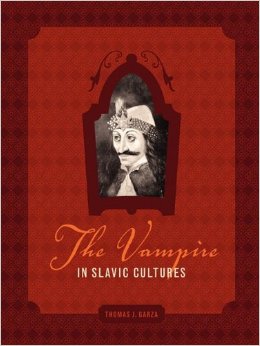Thomas Garza

Education: B.A., Russian Langauge and Literature, Haverford College; M.A., Russian Language and Literature, Bryn Mawr College; M.A., Slavic Languages and Literatures, Harvard University; Ed.D., Teaching, Curriculum, and Learning Environmnents, Harvard University
Thomas Garza is University Distinguished Teaching Associate Professor in Slavic and Eurasian Studies and Director of the Texas Language Center at the University of Texas at Austin.
When did you first develop an interest in Slavic, East European and Eurasian Studies?
My introduction to things Slavic was entirely serendipitous. After finding out that I needed a second foreign language at Haverford and Bryn Mawr Colleges as an undergrad, I found myself in beginning Russian. The class, the language, and the engagement with the culture were so fascinating, that I went from pursuing a pre-law degree to becoming a Russian major. After taking on South Slavic languages and teaching Russian for several years during grad school, my interests shifted to language acquisition and pedagogy. I spent a Fulbright-Hays year in Moscow in the mid-‘80s exploring how Soviet students in spetsshkoly learned English so well, in spite of having virtually no contact with native speakers. This work took me to the State Department after completing my doctorate to work in the Foreign Service Institute, and finally to the University of Texas at Austin to coordinate the Russian language program and teach courses in Russian culture.
How have your interests changed since then?
All of my work in teaching language focuses on developing cultural literacy together with proficiency. I found, even with novice learners, that the introduction of cultural material was linked not only to their success in their studies, but in their desire to continue in the language. Most of my scholarly work before tenure was strictly related to applied linguistics and pedagogy, including a handbook of Russian verbal conjugation, an English textbook for Russian learners, and articles on using video technology to teach language, I found my research interests and publications moving more and more into cultural studies by the 2000s. This work led to the creation of a number of large-enrollment culture courses, such as “The Vampire in Slavic Cultures” (which also became an edited course reader), “Russian Sci-Fi in Literature and Film,” “The Russian Fairy Tale,” and “Russian Youth Culture.” These classes have been effective in  encouraging students to take other Slavic language and area studies courses in our program.
encouraging students to take other Slavic language and area studies courses in our program.
What is your current research project?
I am completing a book manuscript called Bandits No More: Marginal Masculinities in Contemporary Mexican and Russian Popular Cultures, which examines cultural portraits of Russian and Latino men in the 1990s and 2000s, focusing on the parallel cultural shift in both Russian and Mexican cultures from traditional “macho” male roles, to an intellectualized, “feminized” new machismo of the 2000s. The idea for the volume grew out of my Mexican-American heritage and experiences growing up in South Texas, and an interest in Russian performances of masculinity around conscription and the Chechen wars.
What do you value about your ASEEES membership?
Membership in ASEEES facilitates interaction and collaboration with a broad range of colleagues from a wide spectrum of disciplines, all connected by a passion for Slavic studies. This diversity of perspectives and approaches to our region has been extremely influential in my own professional development of my research and scholarship over the past decades. Without question, conversations begun at the annual ASEEES conference have positively informed my research and teaching.
Besides your professsional work, what other interests and/or hobbies do you enjoy?
My wife, who is a scholar in comparative literature at UT, and I like to travel as much as our schedules allow. Besides venturing to Russia at least once every year, we also enjoy spending time in Mexico, Britain, Italy, and France. I am also a reasonable cook and enjoy having friends and colleagues to dinner. My favorite cuisines to prepare are Mexican, Russian, Georgian, and Italian, but I’m always looking for others to add to my repertoire!
Image Caption: Thomas Garaza's text The Vampire in Slavic Cultures
